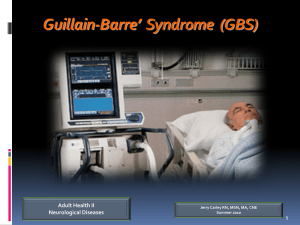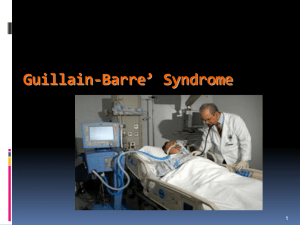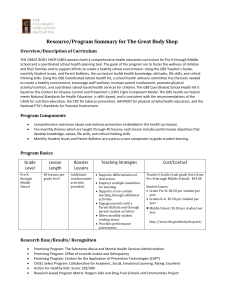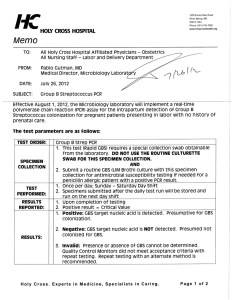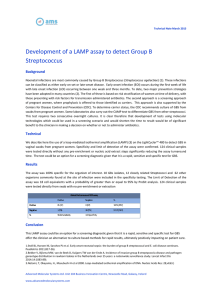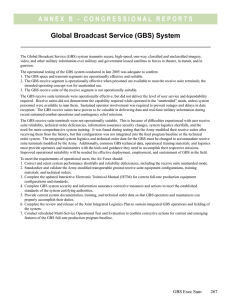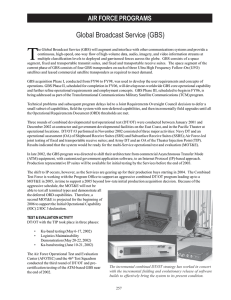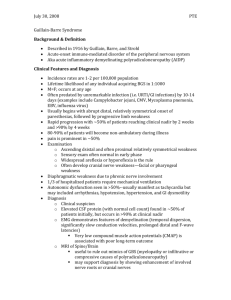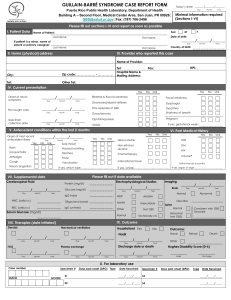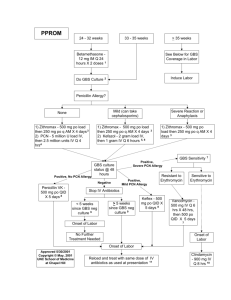PAIN IN THE GUILLAIN
advertisement
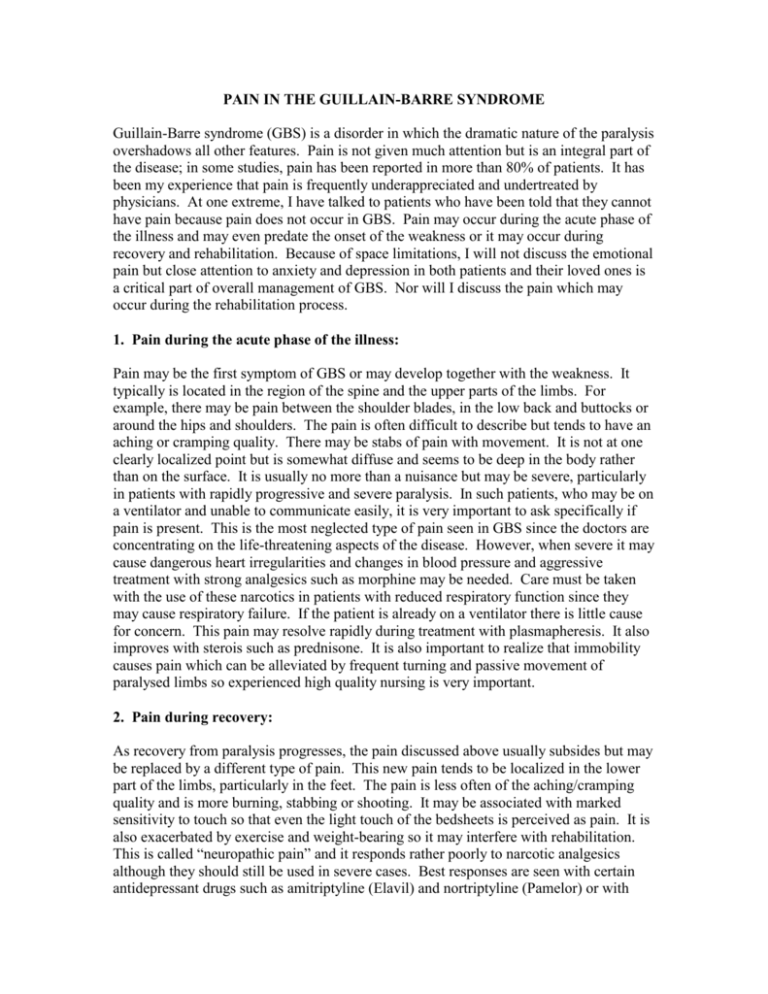
PAIN IN THE GUILLAIN-BARRE SYNDROME Guillain-Barre syndrome (GBS) is a disorder in which the dramatic nature of the paralysis overshadows all other features. Pain is not given much attention but is an integral part of the disease; in some studies, pain has been reported in more than 80% of patients. It has been my experience that pain is frequently underappreciated and undertreated by physicians. At one extreme, I have talked to patients who have been told that they cannot have pain because pain does not occur in GBS. Pain may occur during the acute phase of the illness and may even predate the onset of the weakness or it may occur during recovery and rehabilitation. Because of space limitations, I will not discuss the emotional pain but close attention to anxiety and depression in both patients and their loved ones is a critical part of overall management of GBS. Nor will I discuss the pain which may occur during the rehabilitation process. 1. Pain during the acute phase of the illness: Pain may be the first symptom of GBS or may develop together with the weakness. It typically is located in the region of the spine and the upper parts of the limbs. For example, there may be pain between the shoulder blades, in the low back and buttocks or around the hips and shoulders. The pain is often difficult to describe but tends to have an aching or cramping quality. There may be stabs of pain with movement. It is not at one clearly localized point but is somewhat diffuse and seems to be deep in the body rather than on the surface. It is usually no more than a nuisance but may be severe, particularly in patients with rapidly progressive and severe paralysis. In such patients, who may be on a ventilator and unable to communicate easily, it is very important to ask specifically if pain is present. This is the most neglected type of pain seen in GBS since the doctors are concentrating on the life-threatening aspects of the disease. However, when severe it may cause dangerous heart irregularities and changes in blood pressure and aggressive treatment with strong analgesics such as morphine may be needed. Care must be taken with the use of these narcotics in patients with reduced respiratory function since they may cause respiratory failure. If the patient is already on a ventilator there is little cause for concern. This pain may resolve rapidly during treatment with plasmapheresis. It also improves with sterois such as prednisone. It is also important to realize that immobility causes pain which can be alleviated by frequent turning and passive movement of paralysed limbs so experienced high quality nursing is very important. 2. Pain during recovery: As recovery from paralysis progresses, the pain discussed above usually subsides but may be replaced by a different type of pain. This new pain tends to be localized in the lower part of the limbs, particularly in the feet. The pain is less often of the aching/cramping quality and is more burning, stabbing or shooting. It may be associated with marked sensitivity to touch so that even the light touch of the bedsheets is perceived as pain. It is also exacerbated by exercise and weight-bearing so it may interfere with rehabilitation. This is called “neuropathic pain” and it responds rather poorly to narcotic analgesics although they should still be used in severe cases. Best responses are seen with certain antidepressant drugs such as amitriptyline (Elavil) and nortriptyline (Pamelor) or with anticonvulsant drugs like gabapentin (Neurontin) and carbamazepine (Tegretol). High doses are usually necessary and response may not be immediate. In my experience, the commonest cause of failure of these drugs is that the dose is not high enough and is not used for long enough. Most patients will experience side effects if the drugs are used in sufficient doses to relieve pain but the benefit should outweigh those side effects. Another problem is patient expectations; treatment is expected to reduce the pain but will seldom abolish it. If a patient is expecting to be pain free and there is only a 50% reduction in pain intensity that will be regarded as a treatment failure and yet that is about the best that can be expected. Nontraditional treatments such as acupuncture may also help. Neuropathic pain also subsides with time but may persist for months or years and occasionally some pain may persist permanently. In summary, pain of some degree occurs in most patients suffering from GBS and may occur at any stage of the illness. It is frequently ignored and usually is undertreated. Fortunately, in most patients it is mild and, even when severe, it usually improves spontaneously or with treatment
